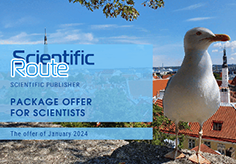Визначення державної фінансової підтримки непріоритетних територіальних одиниць на прикладі мостобудування
DOI:
https://doi.org/10.15587/1729-4061.2021.225524Ключові слова:
державне фінансування, фінансова підтримка, державна підтримка, модель фінансування, мостобудуванняАнотація
Розглянуто проблему розподілу державної фінансової підтримки на підставі комплексного підходу. Доведено актуальність і необхідність державної підтримки найменш пріоритетних територіальних осередків (областей). Дана відповідь на дослідницьке питання: «Які компоненти потрібно включити в методику визначення державної фінансової підтримки». Запропоновано комплексну методику визначення долі державних фінансових засобів, що враховує інвестиційну привабливість регіону (області) і ризик відповідного регіону (області). Для досягнення поставленої мети в роботі були використані такі загальнонаукові та спеціальні методи і прийоми дослідження: порівняльний аналіз наукової літератури та інформаційних джерел на основі методів порівняння, систематизації та узагальнення; узагальнення результатів аналізу, логічна генерація висновків та інтегральної оцінки.
Оскільки проблема фінансування будівництва та реконструкції мостів актуальна для ряду країн, дана методика була апробована саме на прикладі мостобудування.
Згідно з отриманими результатами під державну фінансову підтримку потрапляють територіальні осередки (області), які не є лідерами за пріоритетністю для інвестора і мають високий рівень ризикованості вкладення фінансових коштів. Проблема фінансування таких регіонів може бути вирішена тільки за допомогою державної підтримки.
Результати розрахунків показують, що розподіл фінансових коштів при наявному обсязі державних фінансів К=1, що виділяються на підтримку, здійснюється пропорційно. Комплексний підхід дозволив визначити 10 територіальних осередків (областей) для фінансування, при цьому області з найгіршими показниками пріоритетності отримують найбільшу частку фінансової державної підтримки.
Дане дослідження практично цікаво державним органам управління при розподілі державних коштів, а теоретично – дослідникам, що займаються питаннями фінансового забезпечення та державного управління.
Посилання
- Del Grosso, A., Inaudi, D., Pardi, L. (2002). Overview of European activities in the health monitoring of bridges. First International Conference on Bridge Maintenance, Safety and Management. Bercelona. Available at: https://www.researchgate.net/publication/229004961
- Manukov, S. (2018). Sotni evropeyskih mostov nahodyatsya v avariynom sostoyanii. Ekspert. Available at: https://expert.ru/2018/08/17/sotni-evropejskih-mostov-nahodyatsya-v-avarijnom-sostoyanii/
- Pucci, A., Giresini, L., Sassu, M. (2019). Method for sustainable large-scale bridges survey. IABSE Symposium, Guimarães 2019: Towards a Resilient Built Environment Risk and Asset Management. doi: https://doi.org/10.2749/guimaraes.2019.1034
- Di Sarno, L., da Porto, F., Guerrini, G., Calvi, P. M., Camata, G., Prota, A. (2018). Seismic performance of bridges during the 2016 Central Italy earthquakes. Bulletin of Earthquake Engineering, 17 (10), 5729–5761. doi: https://doi.org/10.1007/s10518-018-0419-4
- Pelke, E. (2020). The main directions taken by road bridges in Germany in the twentieth century. Proceedings of the Institution of Civil Engineers - Engineering History and Heritage, 173 (1), 14–25. doi: https://doi.org/10.1680/jenhh.19.00002
- Hendricks, A., Volovich, N. V. (2018). Renovation in East Germany: the program of support of "disappearing" cities. Property relations in the Russian Federation, 5 (200), 26–42. doi: http://doi.org/10.24411/2072-4098-2018-15002
- Pochti polovina latviyskih mostov - v plachevnom sostoyanii (2018). Available at: http://baltijalv.lv/news/read/31002
- Prato, C. A., Gerbaudo, C. F., Ceballos, M. A. (2002). Case Studies of Failure, Damage Assessment, and Repair of Multispan Bridges in Argentina. Rehabilitating and Repairing the Buildings and Bridges of Americas. doi: https://doi.org/10.1061/40613(272)14
- Milani, С. J., Kripka, М. (2012). Diagnosis of pathologies in bridges of the road system in Brazil. Constructii, 1, 26–34. Available at: https://www.researchgate.net/profile/Moacir_Kripka/publication/237101774_Diagnosis_of_pathologies_in_bridges_of_the_road_system_in_Brazil/links/0046351b88c3b4f50d000000.pdf
- Esteves, I. C. A., Medeiros-Junior, R. A., Medeiros, M. H. F. (2018). NDT for bridges durability assessment on urban-industrial environment in Brazil. International Journal of Building Pathology and Adaptation, 36 (5), 500–515. doi: https://doi.org/10.1108/ijbpa-04-2018-0032
- Khozhempo, V. V., Chernova, V. A. (2010). Brazil: current situation, problems and tendencies of innovative development. RUDN Journal Of Economics, 4, 53–58. Available at: http://journals.rudn.ru/economics/article/view/11886/11316
- Backward Regions Grant Fund. Available at: https://www.indiastat.com/social-and-welfare-schemes-data/27/backward-classes-schemes/27905/backward-regions-grant-fund-brgf/411976/stats.aspx
- Backward Region Grant Fund for all Arunachal districts. Available at: https://timesofindia.indiatimes.com/city/guwahati/Backward-Region-Grant-Fund-for-all-Arunachal-districts/articleshow/27236041.cms
- Pipinato, A. (2018). Extending the lifetime of steel truss bridges by cost-efficient strengthening interventions. Structure and Infrastructure Engineering, 14 (12), 1611–1627. doi: https://doi.org/10.1080/15732479.2018.1465103
- Gil, N., Beckman, S. (2009). Introduction: Infrastructure Meets Business: Building New Bridges, Mending Old Ones. California Management Review, 51 (2), 6–29. doi: https://doi.org/10.2307/41166478
- Parker, F. (1931). Constructing and Financing Toll Bridges. The Journal of Land & Public Utility Economics, 7 (2), 127. doi: https://doi.org/10.2307/3139049
- Danette Bonano-Rodríguez, V. (2017). La colaboración público-privada para la provisión de autopistas, carreteras y puentes. Madrid, 360. Available at: https://eprints.ucm.es/40889/
- Cangiano, M., Anderson, B., Alier, M., Petrie, M., Hemming, R. (2006). Public-Private Partnerships, Government Guarantees, and Fiscal Risk. International Monetary Fund, 100. doi: https://doi.org/10.5089/9781589064935.058
- Levchenko, Ya. S. (2020). Teoretiko-metodologicheskie osnovy finansovogo obespecheniya mostostroeniya Ukrainy v ramkah gosudarstvenno-chastnogo partnerstva. Sofiya. Available at: https://www.academia.edu/41818798/ТЕОРЕТИКО_МЕТОДОЛОГИЧЕСКИЕ_ОСНОВЫ_ФИНАНСОВОГО_ОБЕСПЕЧЕНИЯ_МОСТОСТРОЕНИЯ_УКРАИНЫ_В_РАМКАХ_ГОСУДАРСТВЕННО_ЧАСТНОГО_ПАРТНЕРСТВА
- Guo, S., Shi, Y. (2018). Infrastructure investment in China: A model of local government choice under land financing. Journal of Asian Economics, 56, 24–35. doi: https://doi.org/10.1016/j.asieco.2018.04.001
- Kukacka, J., Kristoufek, L. (2020). Do “complex” financial models really lead to complex dynamics? Agent-based models and multifractality. Journal of Economic Dynamics and Control, 113, 103855. doi: https://doi.org/10.1016/j.jedc.2020.103855
- Kukla, W. (2018). The infrastructure of road transport in Poland in shaping the state security. Transport Economics and Logistics, 80, 139–148. doi: https://doi.org/10.26881/etil.2018.80.15
- Britchenko, І. G., Cherniavska, T. A. (2017). Transport security as a factor of transport and communication system of Ukraine self-sustaining development. Scientific Bulletin of Polissia, 1 (1 (9)), 16–24. doi: https://doi.org/10.25140/2410-9576-2017-1-1(9)-16-24
- Mattar Nasser, R., de Moraes, R. F. (2014). O Brasil e a segurança no seu entorno estratégico: América do Sul e Atlântico Sul. Ipea, 284. Available at: https://www.ipea.gov.br/portal/images/stories/PDFs/livros/livros/livro_brasil_seguranca.pdf
- Pashinskiy, M. (2020). Krupnye i dlinnye: v kakom regione strany bol'she vsego mostov. Available at: https://gmk.center/infographic/krupnye-i-dlinnye-v-kakom-regione-strany-bolshe-vsego-mostov/
- Smyrnov, O., Borysenko, A., Trynova, I., Levchenko, I., Marchenko, A. (2020). Determining the technical and economic parameters for designing hybrid power units for the budget segment. Eastern-European Journal of Enterprise Technologies, 1 (8 (103)), 43–49. doi: https://doi.org/10.15587/1729-4061.2020.194642
- Sardak, S., Samoilenko, A. (2014). National Economies Intellectualization Evaluating in the World Economy. SSRN Electronic Journal, 9-10 (2), 4–7. doi: https://doi.org/10.2139/ssrn.3508400
- Terlikowski, P., Paska, J., Pawlak, K., Kaliński, J., Urbanek, D. (2019). Modern financial models of nuclear power plants. Progress in Nuclear Energy, 110, 30–33. doi: https://doi.org/10.1016/j.pnucene.2018.09.010
- Muczyński, A. (2020). Financial flow models in municipal housing stock management in Poland. Land Use Policy, 91, 104429. doi: https://doi.org/10.1016/j.landusepol.2019.104429
- Snieska, V., Zykiene, I. (2015). City Attractiveness for Investment: Characteristics and Underlying Factors. Procedia - Social and Behavioral Sciences, 213, 48–54. doi: https://doi.org/10.1016/j.sbspro.2015.11.402
- Akbulaev, N., Aliyev, Y., Ahmadov, T. (2019). Research models for financing social business: theory and practice. Heliyon, 5 (5), e01599. doi: https://doi.org/10.1016/j.heliyon.2019.e01599
- Mindlin, Y., Stolyarov, N., Novikova, N., Smolentsev, V., Tikhomirov, E. (2018). Evaluation of competitive advantages of regional economic clusters. Revista ESPACIOS, 39 (31). Available at: https://www.revistaespacios.com/a18v39n31/a18v39n31p14.pdf
- Urbancikova, N., Burger, P. (2014). Financing Clusters from Public Funds in the European Countries. Journal of Applied Economic Sciences, 9 (1 (27)). Available at: https://www.researchgate.net/publication/262791406_Financing_Clusters_from_Public_Funds_in_the_European_Countries
- Angelis-Dimakis, A., Dimaki, K. (2016). Identifying Clusters of Regions in the European South, based on their Economic, Social and Environmental Characteristics. REGION, 3 (2), 71. doi: https://doi.org/10.18335/region.v3i2.81
- Coletti, M., Di Maria, E. (2015). The rush for cluster initiatives: cluster organisation and management in Central Europe. International Journal of Entrepreneurship and Innovation Management, 19 (5-6), 327–342. Available at: https://www.deepdyve.com/lp/inderscience-publishers/the-rush-for-cluster-initiatives-cluster-organisation-and-management-0sfcKSigpR
- Pro zatverdzhennia Metodyky otsiniuvannia roboty tsentralnykh i mistsevykh orhaniv vykonavchoi vlady shchodo zaluchennia investytsiy, zdiysnennia zakhodiv z polipshennia investytsiynoho klimatu u vidpovidnykh haluziakh ekonomiky ta rehionakh i vidpovidnoi formy zvitu. Nakaz Ministerstva ekonomiky Ukrainy vid 17 lypnia 2006 r. No 245. Available at: https://zakon.rada.gov.ua/laws/show/z0459-04#Text
- Vorkut, T., Volynets, L., Bilonog, O., Sopotsko, O., Levchenko, I. (2019). The model to optimize deliveries of perishable food products in supply chains. Eastern-European Journal of Enterprise Technologies, 5 (3 (101)), 43–50. doi: https://doi.org/10.15587/1729-4061.2019.177903
- Orlowski, L. T. (2012). Financial crisis and extreme market risks: Evidence from Europe. Review of Financial Economics, 21 (3), 120–130. doi: https://doi.org/10.1016/j.rfe.2012.06.006
- Koeffitsient variatsii (Variation coefficient). Available at: https://wiki.loginom.ru/articles/variation-coefficient.html
- Mustafakulov, S. (2017). Investment Attractiveness of Regions: Methodic Aspects of the Definition and Classification of Impacting Factors. European Scientific Journal, ESJ, 13 (10), 433. doi: https://doi.org/10.19044/esj.2017.v13n10p433
- Levchenko, Y. (2019). On the way to European integration: how and who can invest in construction and reconstruction of Ukrainian bridges? Eastern Europe: Economy, Business and Management, 6 (23). doi: https://doi.org/10.32782/easterneurope.23-22
- Collier, P., Pattillo, C. (2000). Investment and Risk in Africa. Investment and Risk in Africa, 3–30. doi: https://doi.org/10.1007/978-1-349-15068-7_1
- Abuzayed, B., Al-Fayoumi, N., Arabiyat, T. S. (2018). Does Investors’ Fear Gauge in a Mature Market Matter? Evidence from the MENA Region. The Journal of Wealth Management, 21 (1), 71–87. doi: https://doi.org/10.3905/jwm.2018.21.1.071
- Lee, S. L. (2001). The risks of investing in the real estate markets of the Asian region. Available at: http://centaur.reading.ac.uk/27114/1/0601.pdf
- Singh, R., Bhattacharjee, J. (2019). Measuring Equity Share Related Risk Perception of Investors in Economically Backward Regions. Risks, 7 (1), 12. doi: https://doi.org/10.3390/risks7010012
##submission.downloads##
Опубліковано
Як цитувати
Номер
Розділ
Ліцензія
Авторське право (c) 2021 Ярослава Сергеевна Левченко, Игорь Геннадиевич Бритченко

Ця робота ліцензується відповідно до Creative Commons Attribution 4.0 International License.
Закріплення та умови передачі авторських прав (ідентифікація авторства) здійснюється у Ліцензійному договорі. Зокрема, автори залишають за собою право на авторство свого рукопису та передають журналу право першої публікації цієї роботи на умовах ліцензії Creative Commons CC BY. При цьому вони мають право укладати самостійно додаткові угоди, що стосуються неексклюзивного поширення роботи у тому вигляді, в якому вона була опублікована цим журналом, але за умови збереження посилання на першу публікацію статті в цьому журналі.
Ліцензійний договір – це документ, в якому автор гарантує, що володіє усіма авторськими правами на твір (рукопис, статтю, тощо).
Автори, підписуючи Ліцензійний договір з ПП «ТЕХНОЛОГІЧНИЙ ЦЕНТР», мають усі права на подальше використання свого твору за умови посилання на наше видання, в якому твір опублікований. Відповідно до умов Ліцензійного договору, Видавець ПП «ТЕХНОЛОГІЧНИЙ ЦЕНТР» не забирає ваші авторські права та отримує від авторів дозвіл на використання та розповсюдження публікації через світові наукові ресурси (власні електронні ресурси, наукометричні бази даних, репозитарії, бібліотеки тощо).
За відсутності підписаного Ліцензійного договору або за відсутністю вказаних в цьому договорі ідентифікаторів, що дають змогу ідентифікувати особу автора, редакція не має права працювати з рукописом.
Важливо пам’ятати, що існує і інший тип угоди між авторами та видавцями – коли авторські права передаються від авторів до видавця. В такому разі автори втрачають права власності на свій твір та не можуть його використовувати в будь-який спосіб.









